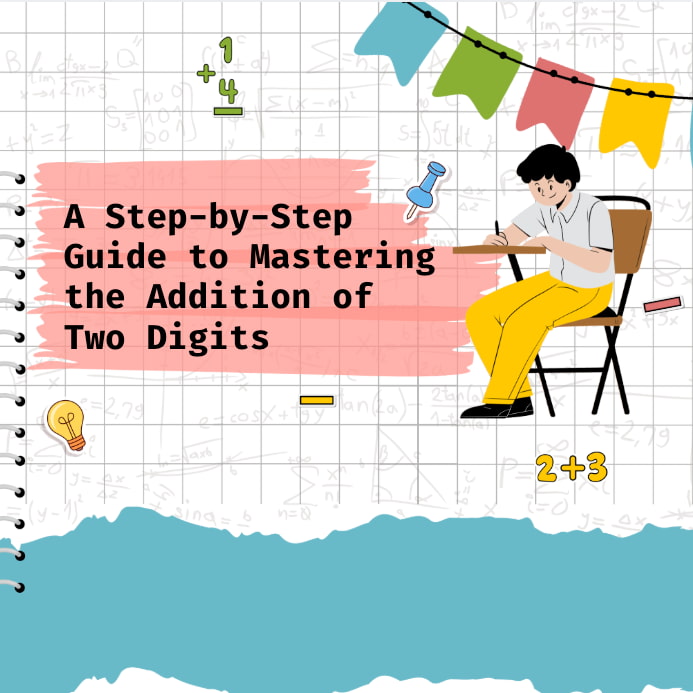Addition of three-digit numbers with regrouping is an important skill for mastering math. It helps students add larger numbers correctly by carrying over values when sums exceed 9 in any place. Learning this method step-by-step will build confidence and accuracy.
With regular practice, students can improve their problem-solving skills and develop a strong foundation in math. Keep reading to discover simple explanations and helpful examples that make understanding regrouping easy and fun for students in class!
What is the Addition of Three Digit Numbers with Regrouping?
Addition 3 digit numbers with regrouping is a math strategy used when the total in any place value column (ones, tens, hundreds) is 10 or more. Regrouping in addition—also called “carrying“—helps ensure each digit is placed in the correct place value, allowing accurate multi-digit addition.
For example, when adding numbers like 345 and 278, sometimes the sum in one place value (like the ones or tens) is more than 9.
In those cases, we need to carry over the extra value to the next place on the left. This process is called regrouping, and it helps keep each digit in its correct place (ones, tens, hundreds), so the final answer is accurate.
Now that you understand why regrouping is important, let’s look at a simple step-by-step guide to adding three digit numbers with regrouping. After that, we’ll go through detailed examples to make it even clearer.
How to Make an Addition of 3 Digit Numbers with Regrouping?
Make teaching the addition of three digit numbers easier with these simple regrouping steps:
Step 1: Align the Numbers Vertically
Write the numbers one on top of the other, making sure to line up the hundreds, tens, and ones columns correctly. This is essential for keeping the place values organized.
Step 2: Start with the Ones Place
Add the digits in the ones place (rightmost column).
- If the sum is 9 or less, write the number directly.
- If the sum is 10 or more, write down the ones digit and carry the tens digit to the tens column.
Step 3: Move to the Tens Place
Add the digits in the tens place, including any number you carried over.
- Again, if the sum is 10 or more, regroup: write the ones digit and carry the tens digit to the hundreds column.
Step 4: Add the Hundreds Place
Add the digits in the hundreds column, and include any number carried over from the tens column.
Step 5: Write the Final Answer
Combine the digits from each column, including any number carried to the thousands place, to form the final sum.
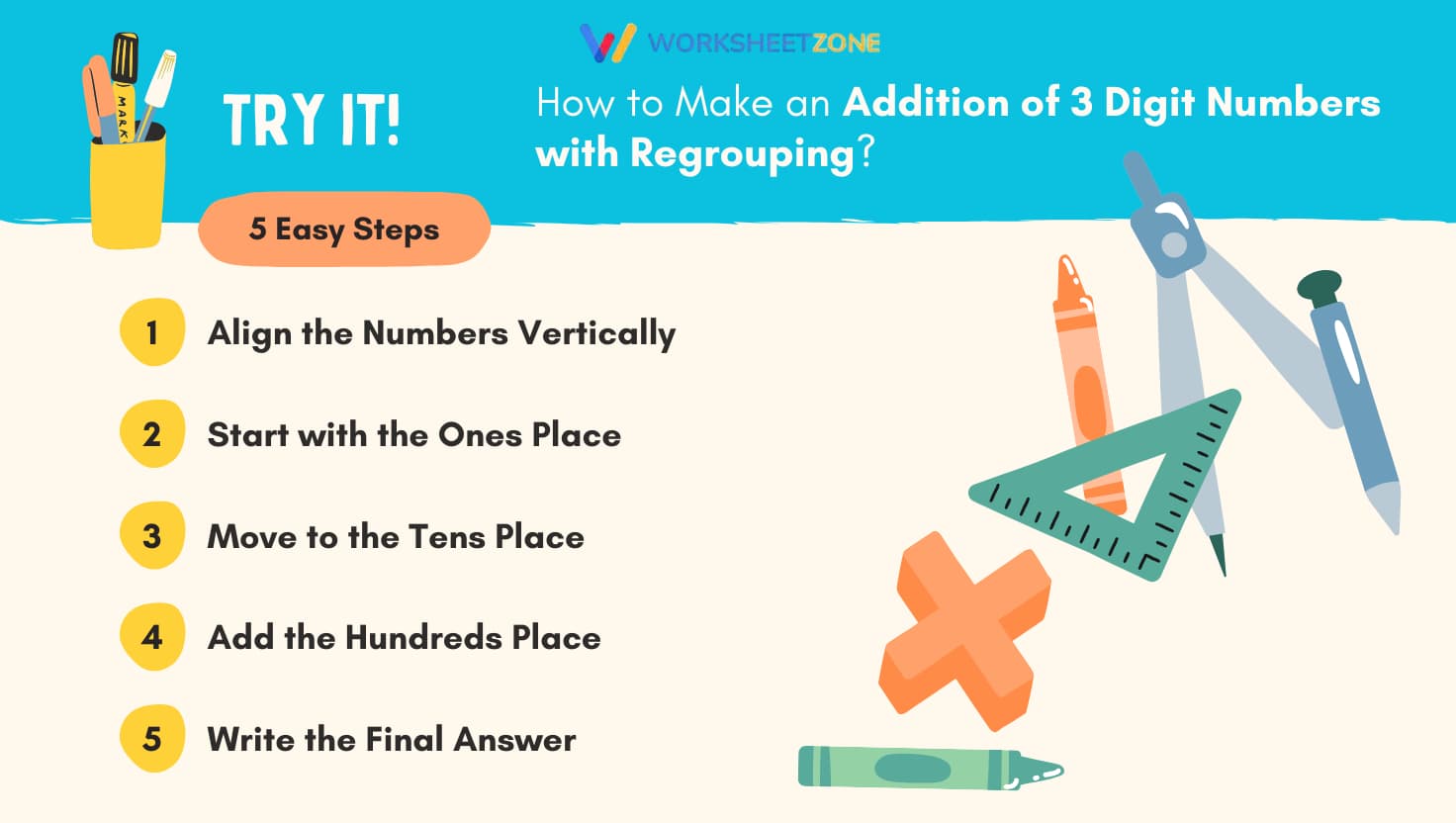
Addition of Three Digit Numbers with Regrouping Examples
Here are some clear examples of addition to help you understand the process step-by-step:
Example 1: Adding 345 + 278
- Let’s start with the ones place, which is the rightmost digit in each number. Add 5 (from 345) and 8 (from 278). That gives us 13. Since 13 is more than 9, we cannot just write 13 in the ones place.
- Instead, we write down the 3 (the ones digit of 13) in the ones place, and we carry the 1 (the tens digit of 13) over to the tens place. This is the regrouping step.
- Next, move to the tens place. Add 4 (from 345), 7 (from 278), and don’t forget the 1 you carried over. That’s 4 + 7 + 1 = 12. Again, 12 is more than 9, so we write down 2 in the tens place and carry the 1 over to the hundreds place.
- Now, add the hundreds place. Add 3 (from 345), 2 (from 278), and the 1 carried over. That gives 3 + 2 + 1 = 6. Since 6 is less than 10, you can write it down directly in the hundreds place.
- Putting it all together, the final answer is 623.
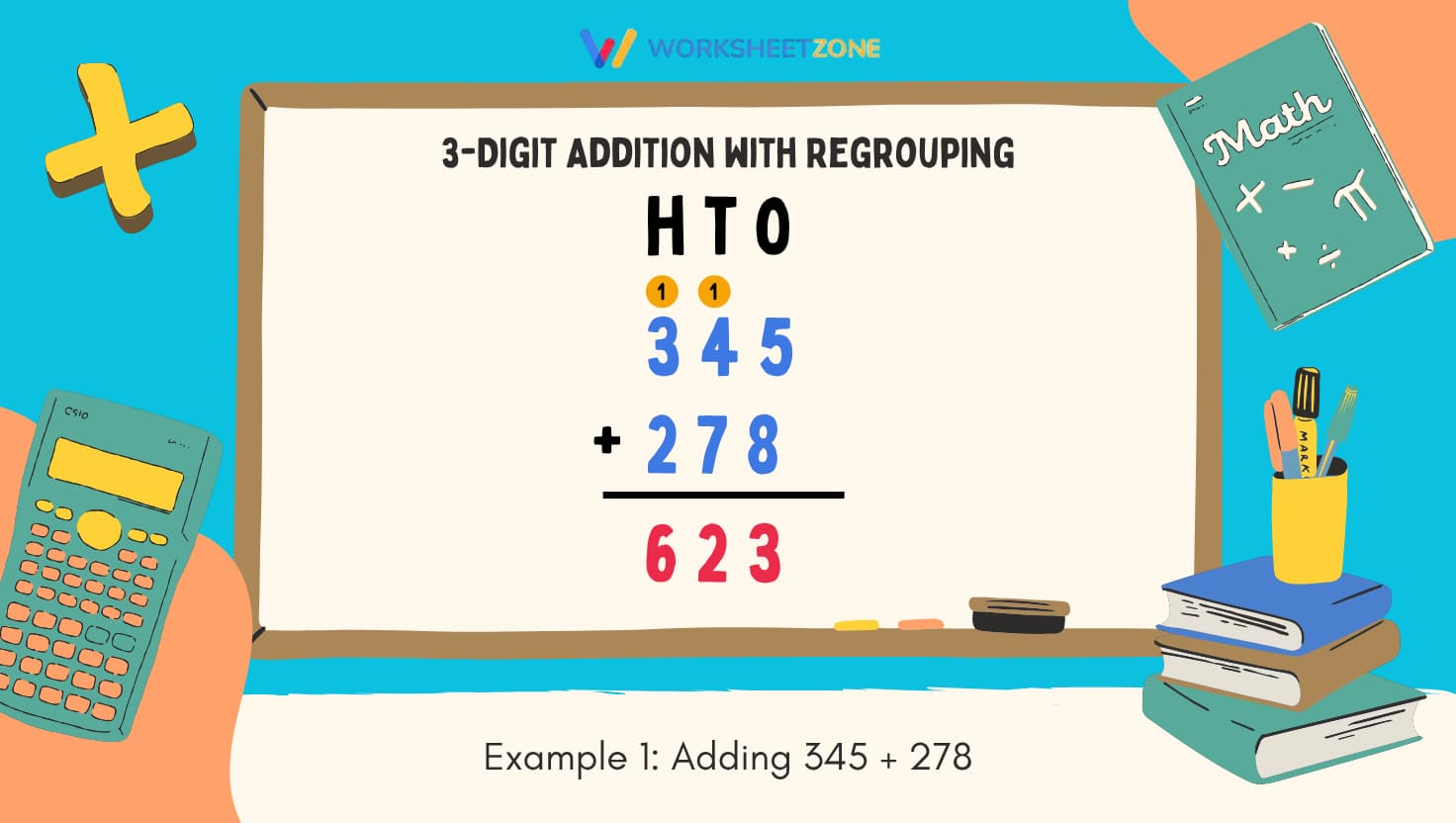
Example 2: Adding 486 + 357
- Start with the ones place: 6 plus 7 equals 13. Write down 3, and carry over 1 to the tens place.
- Move to the tens place: 8 plus 5 equals 13, plus the 1 you carried over equals 14. Write down 4 and carry 1 to the hundreds place.
- Now the hundreds place: 4 plus 3 equals 7, plus the 1 carried over equals 8. Write down 8.
- So, after regrouping and carrying where needed, the sum is 843.
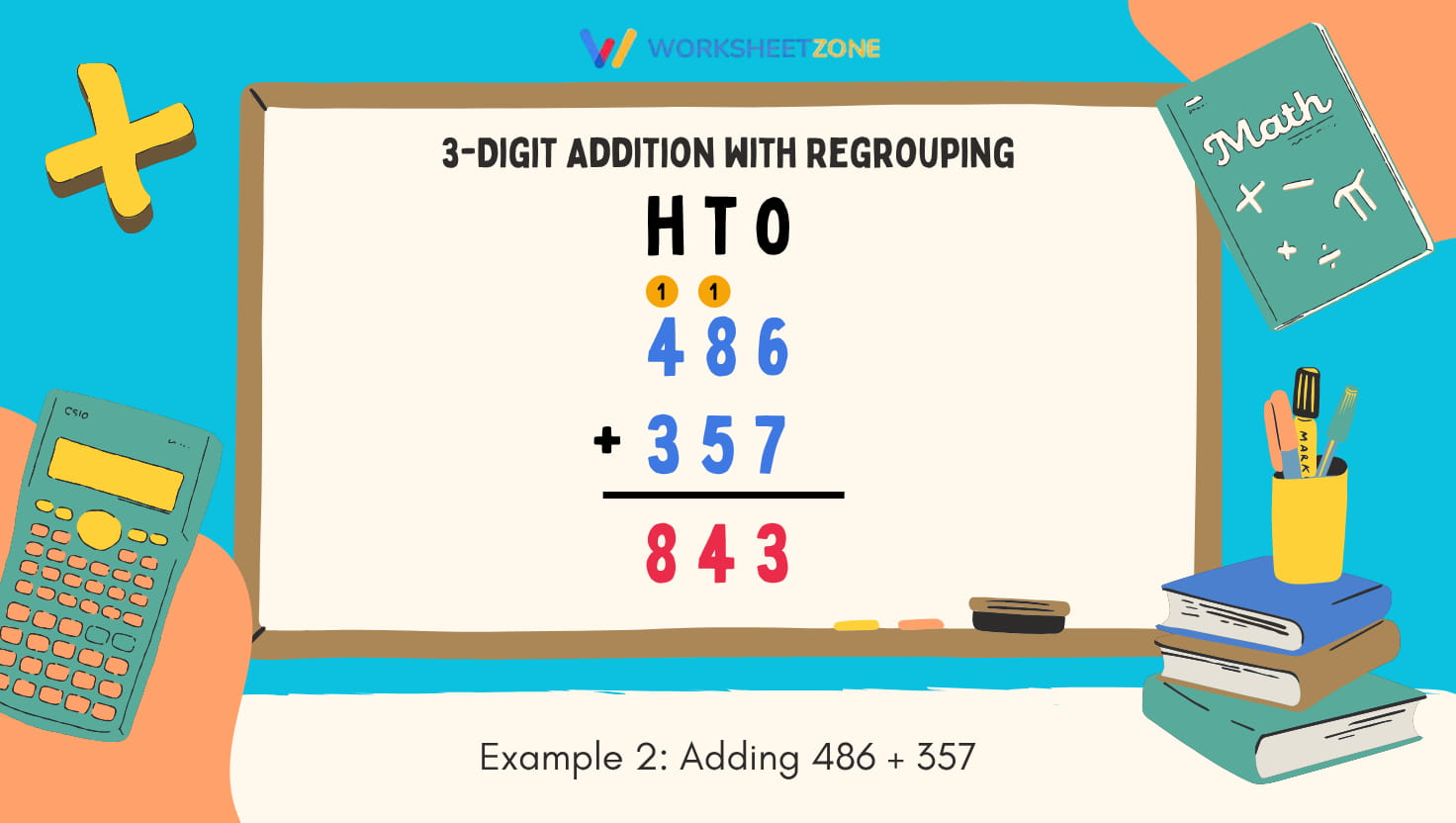
Example 3: Adding 592 + 419
- First, the ones place: 2 plus 9 equals 11. Write down 1, carry 1 to the tens place.
- Next, the tens place: 9 plus 1 plus the 1 you carried over equals 11. Write down 1, carry 1 to the hundreds place.
- Then, the hundreds place: 5 plus 4 plus the 1 carried equals 10. This time, write down 0 and carry 1 over to the thousands place — this means the answer has four digits.
- Because of the carry into the thousands place, write 1 on the leftmost side.
- The final answer is 1011.

Example 4: Adding 734 + 256
- Start with the ones place: 4 plus 6 equals 10. Since 10 is 10 or more, write down 0 in the ones place and carry over 1 to the tens place.
- Move to the tens place: 3 plus 5 equals 8, plus the 1 you carried over equals 9. Write down 9 in the tens place.
- Finally, add the hundreds place: 7 plus 2 equals 9, with no carry over here. Write down 9 in the hundreds place.
- The final sum is 990 — regrouping occurred just once in the ones place, while the rest was straightforward.
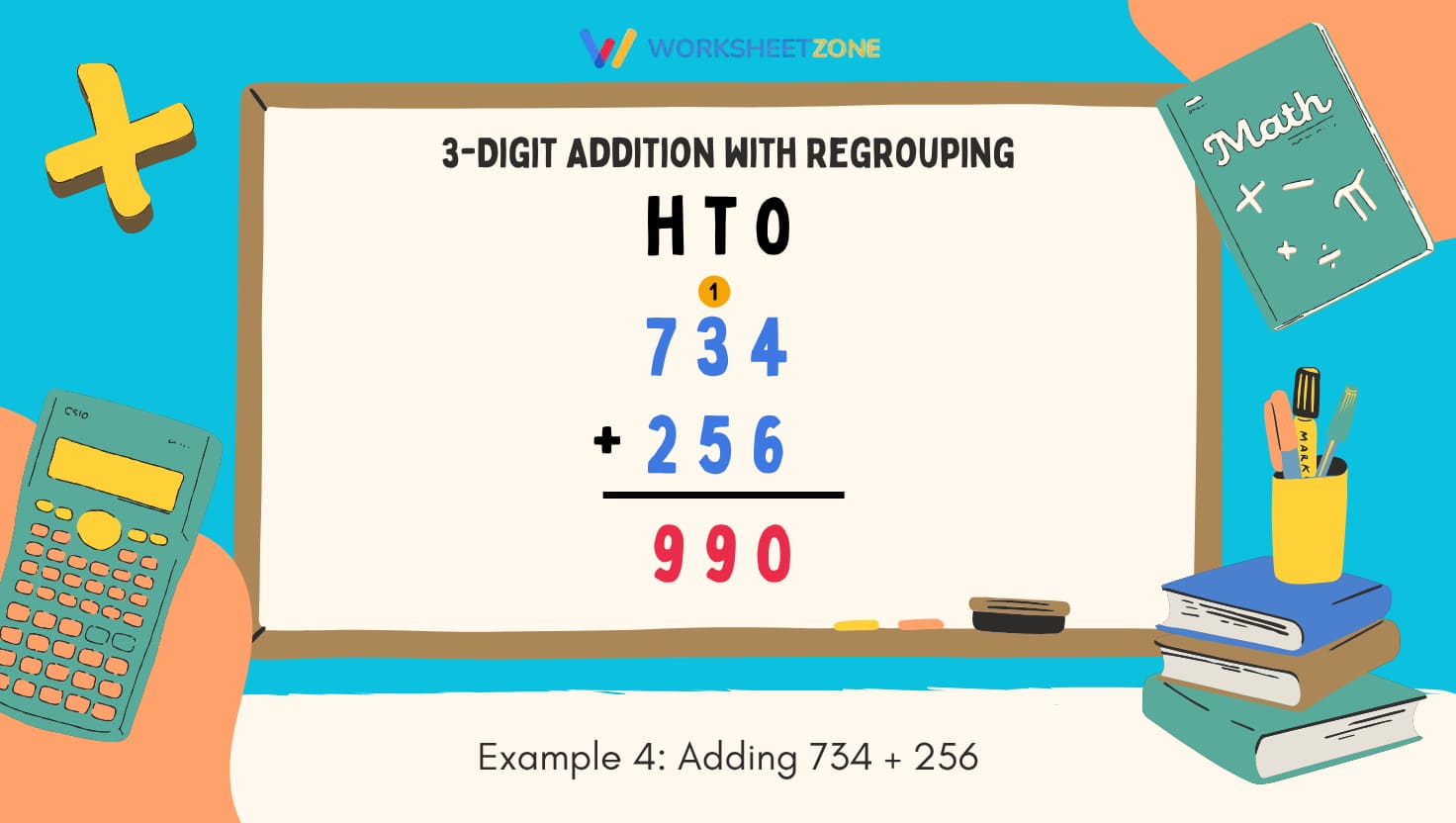
Example 5: Adding 123 + 486
- Look at the ones place first: 3 plus 6 equals 9. Since 9 is less than 10, write 9 and there’s no need to carry anything.
- Next, move to the tens place: 2 plus 8 equals 10. Write down 0 in the tens place, and carry 1 over to the hundreds place.
- Finally, add the hundreds place: 1 plus 4 plus the 1 you carried over equals 6. Write down 6 in the hundreds place.
- So, the total sum is 609 — regrouping happened only once in the tens place, and the rest was straightforward.
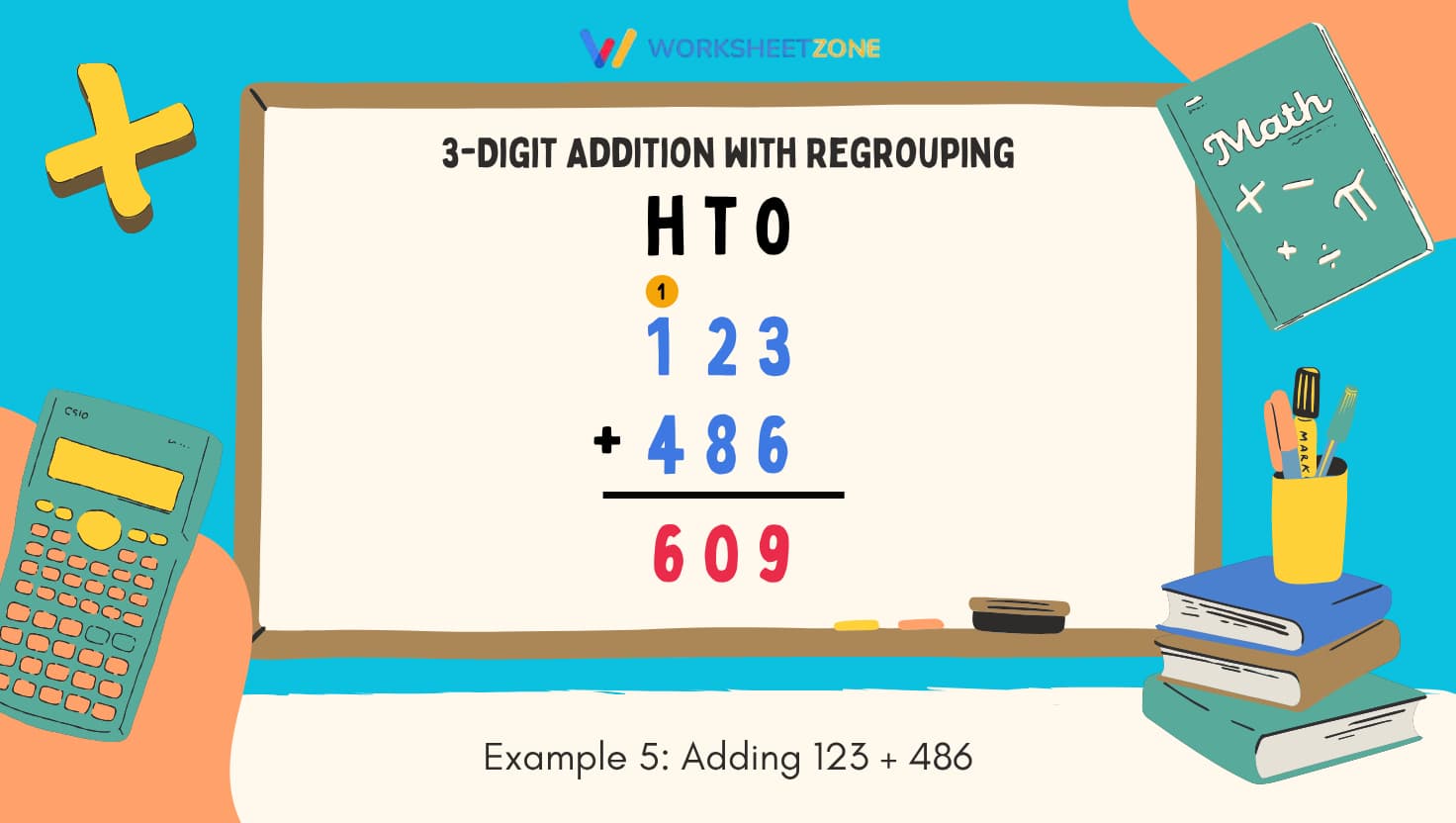
Final Thoughts
Mastering the addition of three digit numbers with regrouping doesn’t have to be hard. With clear steps and regular practice, your students can build confidence and accuracy in no time.
Looking for printable regrouping practice? Check out various three-digit addition worksheets for targeted skill-building and gradual mastery. Download and use them today to provide your students with the extra support they need to master addition with regrouping and enjoy math success!





